
Culture Box, Copenhagen, Denmark. Fujifilm X-T1, Fujinon 16mm lens, 1/200 at F1.6, iso3200
For the past 3 weeks I have had a prototype of the Fujinon XF16mm F1.4 lens on loan from Fujifilm to test, review and shoot sample images.
I use wide angle a lot in my work and I have been looking forward to the XF16mmF1.4 for a long time. I am a sucker for the wide shot and often in my music photography I need to create a dramatic look. Wide angle lenses and I were made to join forces in our quest for the epic. Fuji already produce some really nice wide angle lenses, but this one promised an aperture of F1.4 and I need speed in my nightclub photography.
I am not a technical reviewer, I do not go into all the technical specs of the lens nor do I shoot test patterns or studio shots. Actually I am not a reviewer at all, this is me working with the lens in real situations and my impressions after 3 weeks of use. Some of the images will be grainy due to io6400 as I used the lens in the dark environments I normally shoot in, not in perfect studio conditions. I have not specifically gone for shooting at F1.4 all the time (actually a few times I wanted to but accidentally moved the aperture ring to F1.6) but most of the images are all in the F1.4-F2.0 range – a range no other wide angle Fuji lens can do. On many of the images I have chosen to post the same in camera jpegs as I have delivered to Fuji – I continue to be amazed at how good the in camera jpegs are. Please, note that this is a prototype lens, not a finished product.
Music photography
I work as a commercial music photographer shooter, and I have used the Fujinon 14mm F2.8 lens very often when working music events and it is absolutely a great lens. But it is only aperture F2.8 and sometimes it is so pitch black in these clubs that I need F1.4 to capture what tiny bit of light there is. So the 16mm F1.4 promised to be the perfect music wide angle lens and obviously the first thing I had to do was test the 16mm in a nightclub.
Culture Box, one of the very best clubs in Copenhagen, very kindly allowed me access to shoot with the 16mm lens on a Saturday night in late March. The main room in Culture Box is appropriately called Black Box – it is close to a dark hole in the universe, bathed only in the slightest of red light. No problem at all because the 16mm lens really lives in this pitch black environment. Set the aperture somewhere between F1.4 and F2.0 and iso at iso3200-6400 and I have nightvision! The 16mm feels and operates is very much like the 14mm but the difference between F1.4 and F2.8 literally is night and day at times. The red light is difficult to capture but the dynamic range of the Fuji X-T1 and the fast 16mm lens makes it possible, the red shadows may be somewhat grainy (I happen to like grain) but the entire dynamic range of the reds are captured with no clipped highlights.
After using this lens at two club nights, there is no doubt for me. This is the perfect wide angle for music photography! It is super fast at F1.4, the pictures are extremely sharp and detailed and I highly recommended it. It will be a permanent lens in my bag whenever I go to work to capture beats in the dark.
The following is a selection of my work from Culture Box. I have chosen to leave the images as unprocessed straight out of the camera jpegs, the same images I delivered as samples to Fuji. It really is quite astonishing how good jpegs the X cameras deliver. Bear in mind this is a prototype lens, not a finished product.
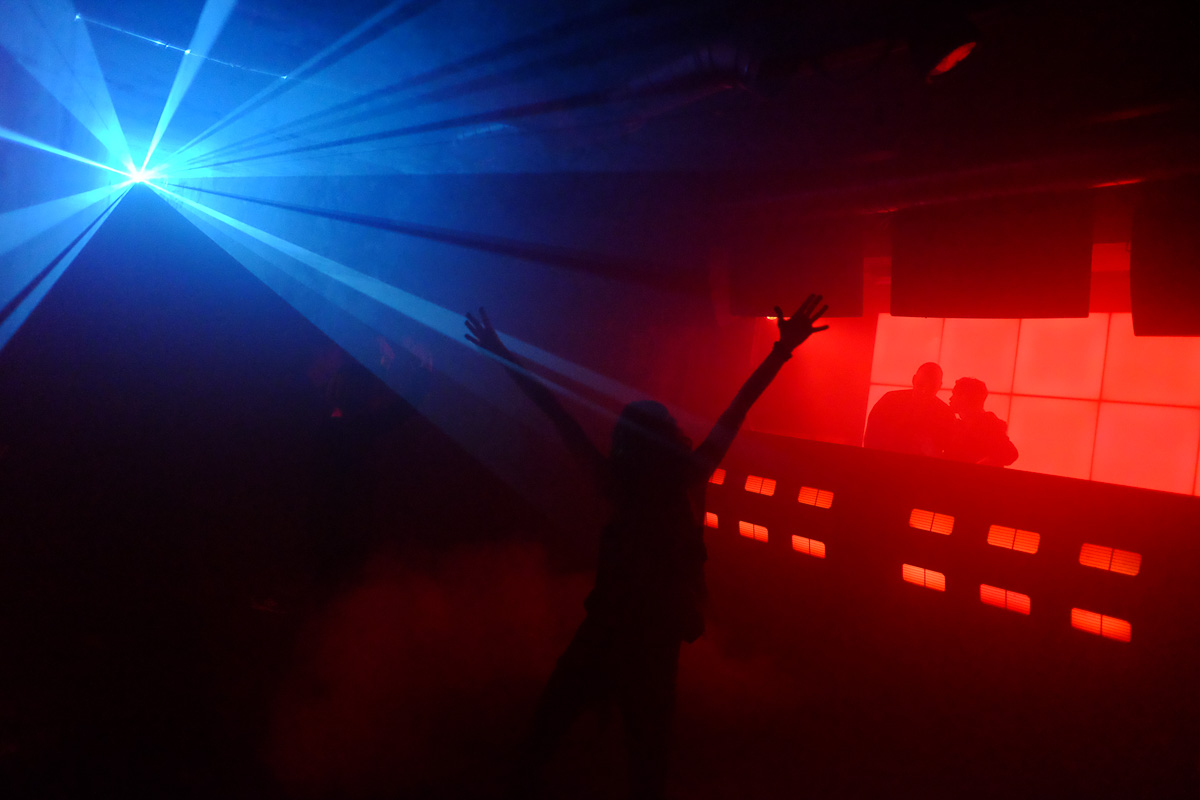
Culture Box, Copenhagen, Denmark. Fujifilm X-T1, Fujinon 16mm lens, 1/140 at F1.6, iso4000 – in camera JPEG

DJ Jean Von Baden at Culture Box, Copenhagen, Denmark. Fujifilm X-T1, Fujinon 16mm lens, 1/200 at F2.0, iso5000 – in camera JPEG
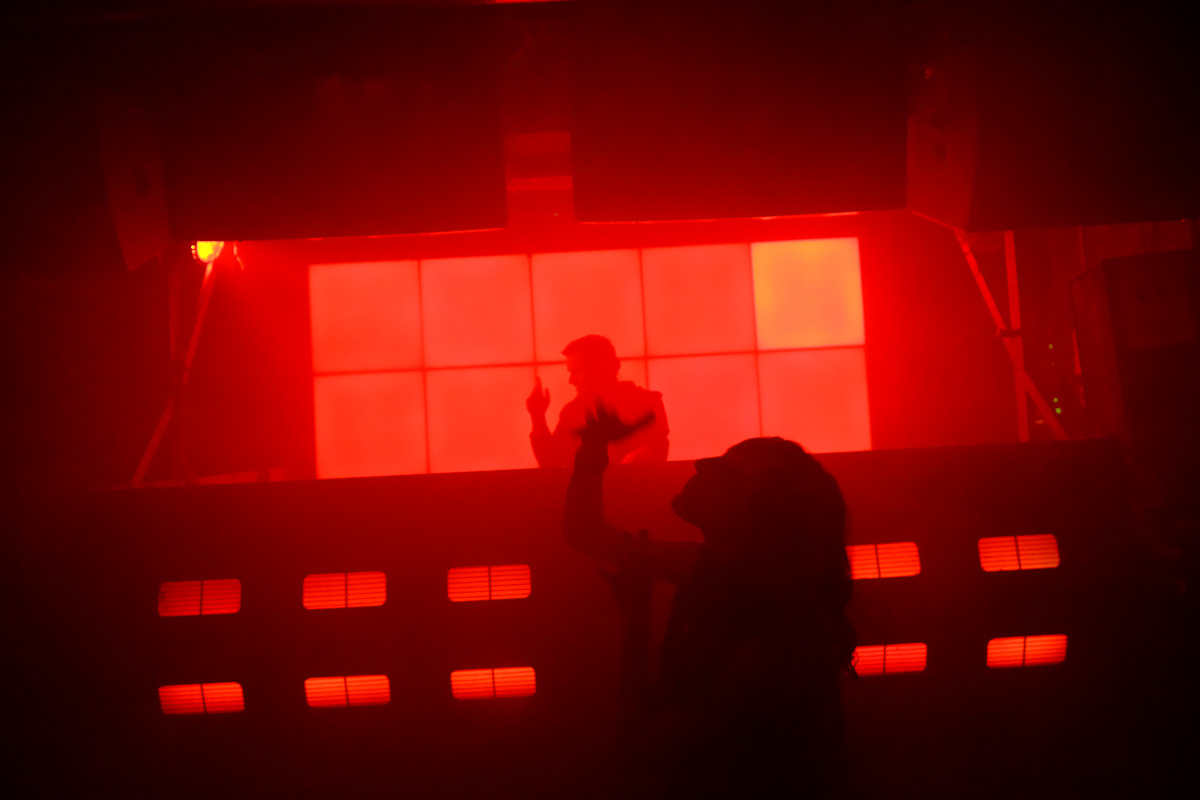
Culture Box, Copenhagen, Denmark. Fujifilm X-T1, Fujinon 16mm lens, 1/70 at F2.2, iso4000 – in camera JPEG
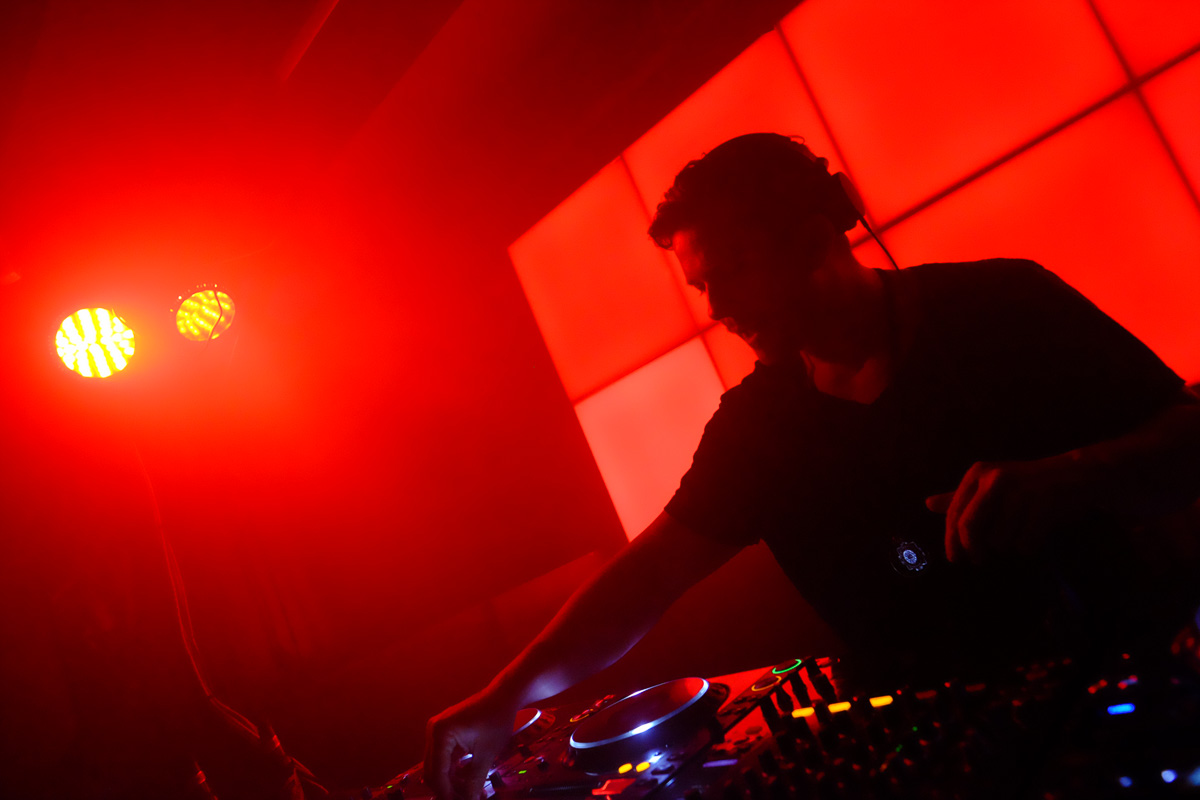
DJ Jean Von Baden at Culture Box, Copenhagen, Denmark. Fujifilm X-T1, Fujinon 16mm lens, 1/210 at F2.8, iso6400 – in camera JPEG
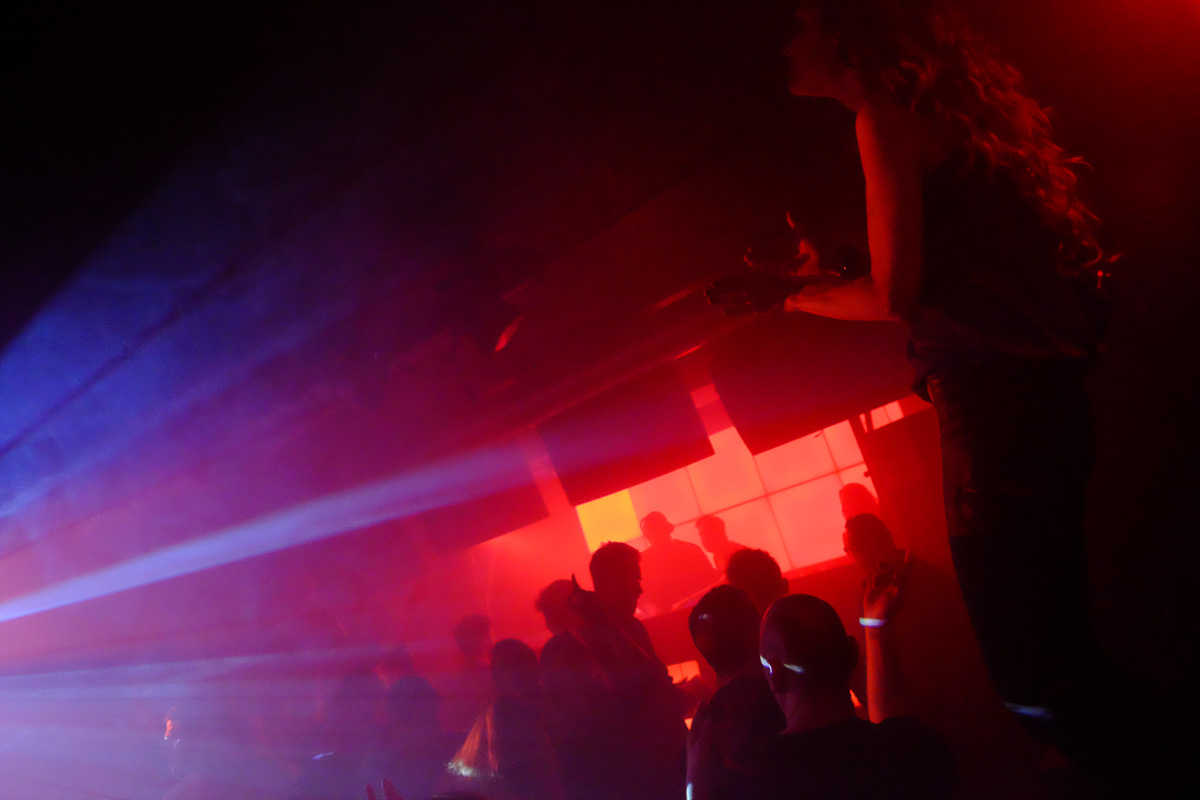
Culture Box, Copenhagen, Denmark. Fujifilm X-T1, Fujinon 16mm lens, 1/80 at F2.0, iso6400 – in camera JPEG
Astro photography
I am no expert at all in astro photography. But the 16mm F1.4 really is ideally suited for this so I wanted to do something special that included shooting a night sky. After returning to Perth, Australia, Charlene and I rented a car and headed for the excellent Nambung National Park. This place is rather alien looking and a great place to test the lens at astro photography. That is, if it would stop raining! Argh! Darn weather! It never rains in Perth right? Well it has been raining and raining. Every day I looked up at the sky and cursed the weather gods. Finally one Sunday, deadline running out, Charlene and I took a chance, headed north and were really lucky with about 3 hours of no rain and only some clouds.
Charlene was testing her new Fuji video rig, and she discovered just how good her new Cineroid video light also served as a light source for our night shots. All of these pictures are basically lazy me sitting behind the tripod on my ass (a behind the scenes post is forthcoming!) and Charlene coming up with a lot of cool shots. I particularly love the first one where Charlene is holding a star in her hand!
These pictures are all unprocessed in camera jpegs, I want to show you the sample images straight out of camera. Again, bear in mind, this is a prototype lens.

Charlene at Nambung National Park, Australia. Fujifilm X-T1, Fujinon 16mm lens, 5sec at F4.0, iso400 – in camera JPEG
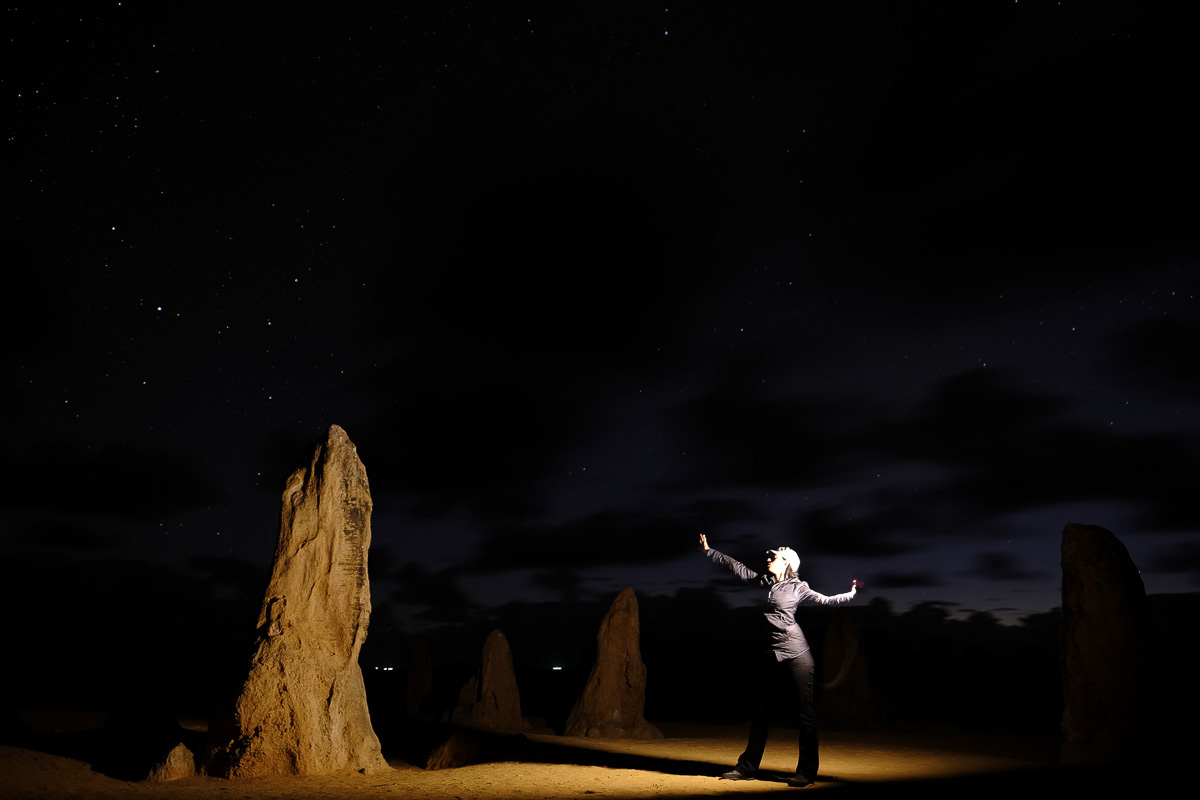
Charlene at Nambung National Park, Australia. Fujifilm X-T1, Fujinon 16mm lens, 30sec at F1.8, iso250 – in camera JPEG
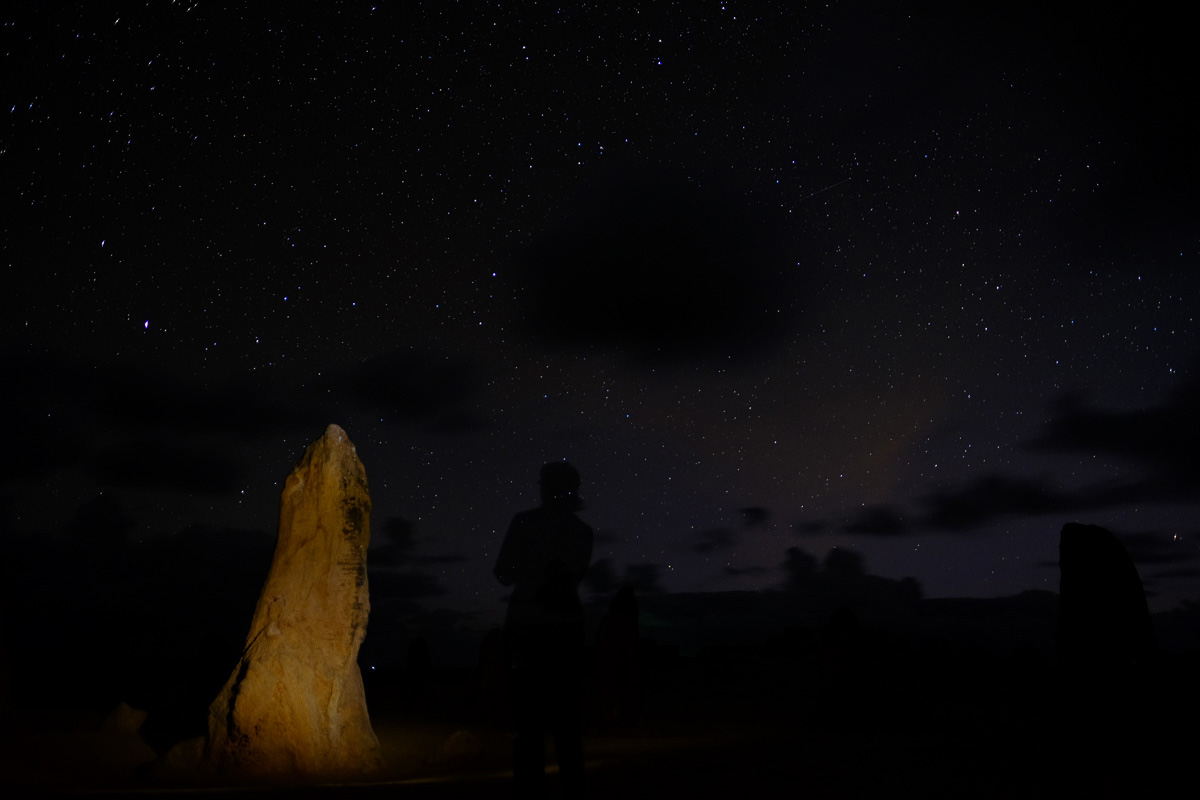
Charlene at Nambung National Park, Australia. Fujifilm X-T1, Fujinon 16mm lens, 20sec at F1.4, iso400 – in camera JPEG
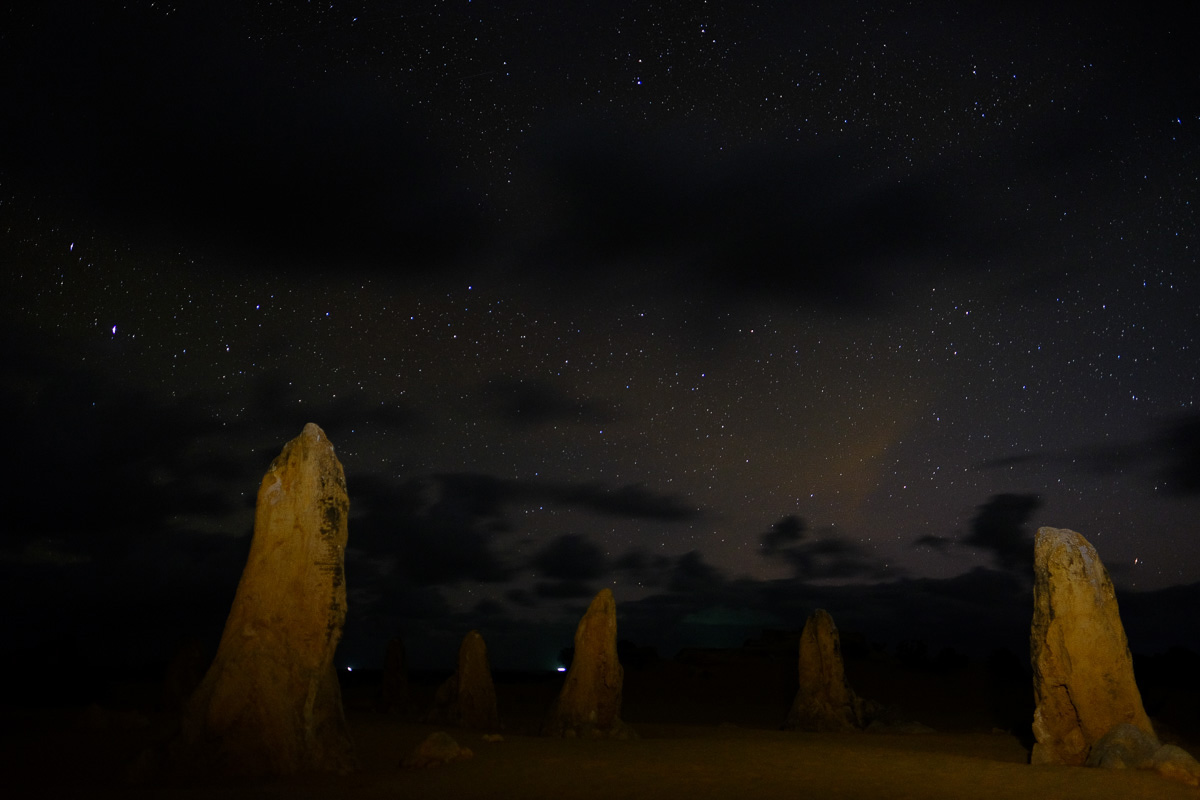
Nambung National Park, Australia. Fujifilm X-T1, Fujinon 16mm lens, 20sec at F1.4, iso500 – in camera JPEG
Macro
I know very little about macro photography, but I was just goofing around with the lens and discovered that I can focus on objects only 5cm away! Actually, the minimum focus distance of the lens is 15cm but since the lens itself is about 8cm long and the lenght of flange back is 2cm then you can focus on your Boba Fett keyring standing only 5cm from the lens. The bokeh is really rather nice on this lens too and it is quite amazing how much out of focus you can get the background on a 16mm lens.
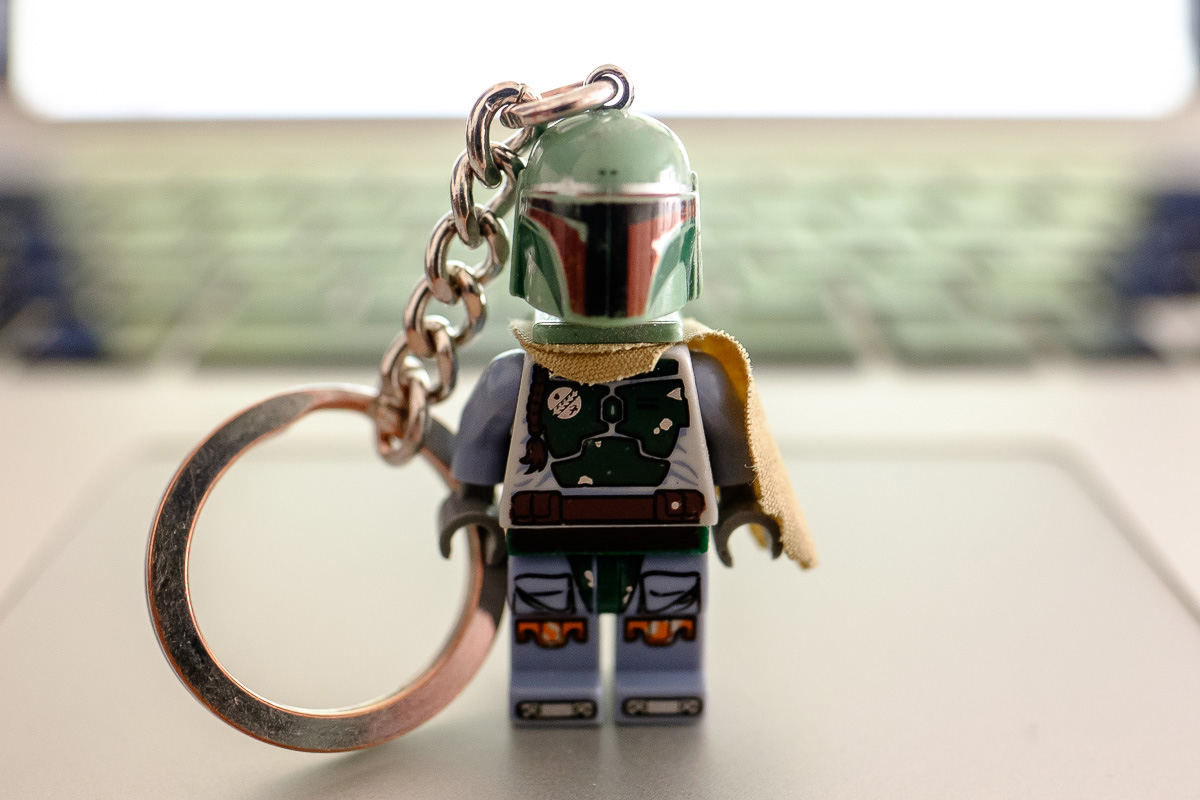
“He is no good to me dead”. Boba Fett on my Macbook. Best image I have ever shot, period! 16mm lens, F2.8
Some other pictures
A small selection of random images I made during the 3 weeks where I have carried and used the 16mm lens every day, shooting over 800 images.

Copenhagen at night. It was freeeeeezing cold making this shot. 16mm lens, 17 sec at F11.0 – in camera JPEG
Summary of my impression of the Fujinon XF16mmF1.4 lens
- Image quality. We have come to expect great things from Fuji lenses and this lens delivers. It is extremely sharp and detailed. Even at F1.4 details are very finely rendered. Colours are as you can see in the Culture Box shots very vivid and has detail. It is a lens totally on par with the best of the Fuji primes, the image quality is everything I would expect and hope from a Fuji lens. There is not too much wide angle distortion either.
- Build quality is also as we have come to expect from a Fujinon lens, extremely high. It is build very much like the 14mm and the 23mm.
- The lens features the clutch focus ring which works well enough. I must admit to not quite being a fan of the clutch though and I never quite figured out why some lenses (35mm, 56mm, 16-55mm etc) have one type of focus ring and others have the clutch.
- The autofocus is generally fast and very reliable.
- Size. Well we all want every lens to be the size of the 18mm right. I know I do. But, have to respect the laws of physics. I want F1.4 at 16mm at super image quality from this lens so that requires a certain amount of light to get through and a certain amount of glass. It is about the size of the 56mm lens and I never felt the 16mm was too big or heavy when working with it.
- This is the perfect wide angle lens for shooting music photography, and will be a permanent lens in my bag. I also feel it is great for astro photography, any kind of night time wide angle work like street or documentary photography at night.
Thanks
Thank you very much to Fujifilm Japan, Fujifilm Nordic, Culture Box in Copenhagen – and the most magic of all, Charlene Winfred.
Finally, a picture of yours truly and the 16mm wideangle wonder. Picture by Charlene Winfred.
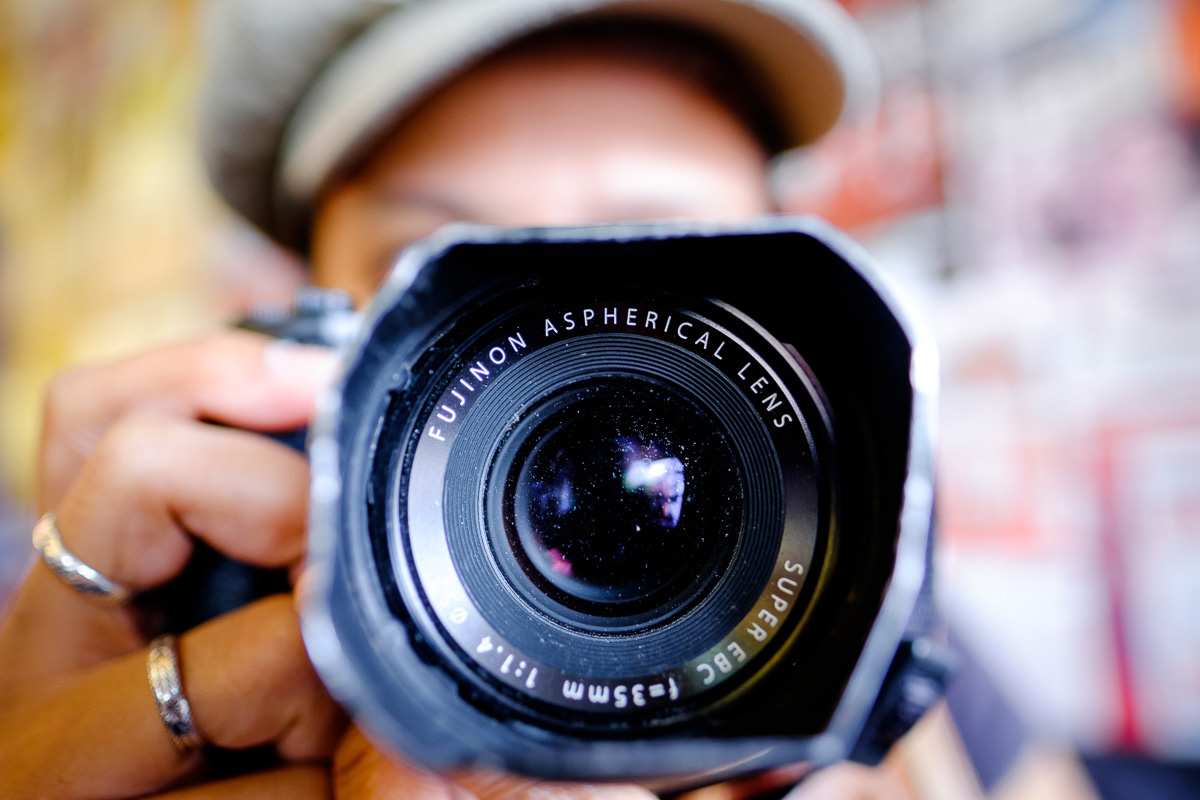

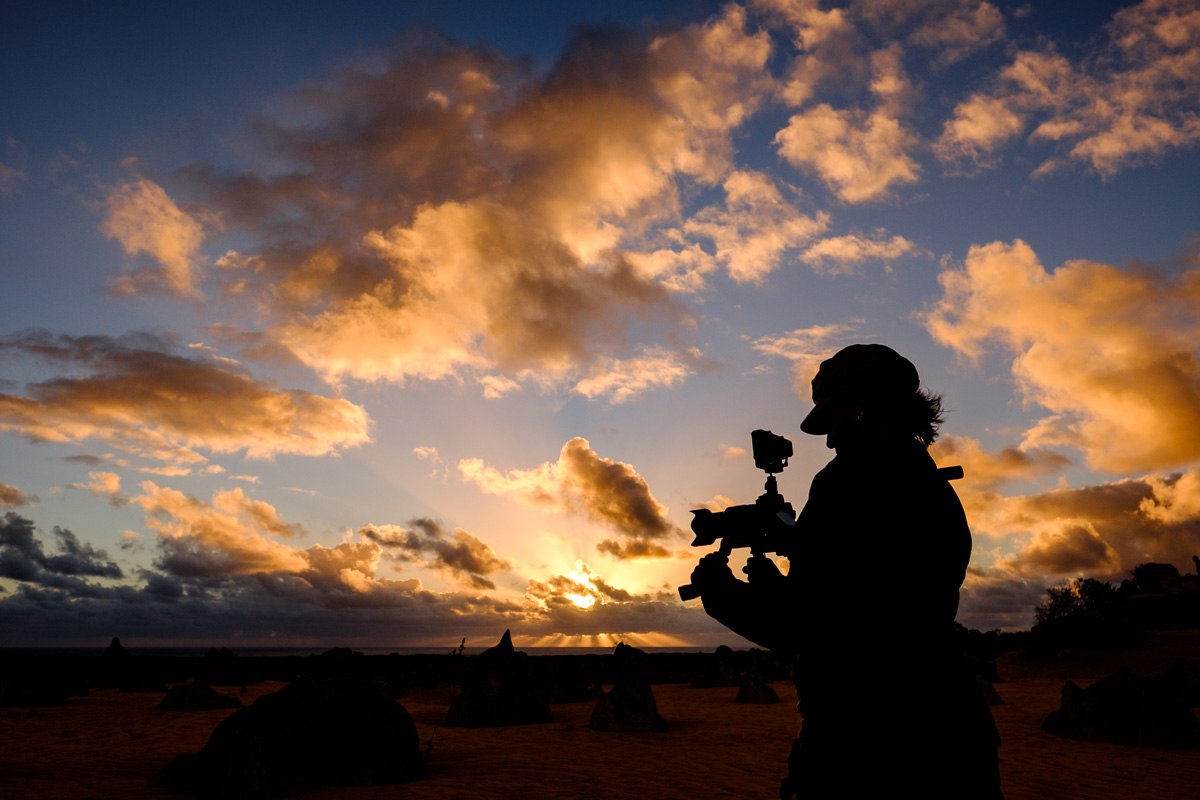
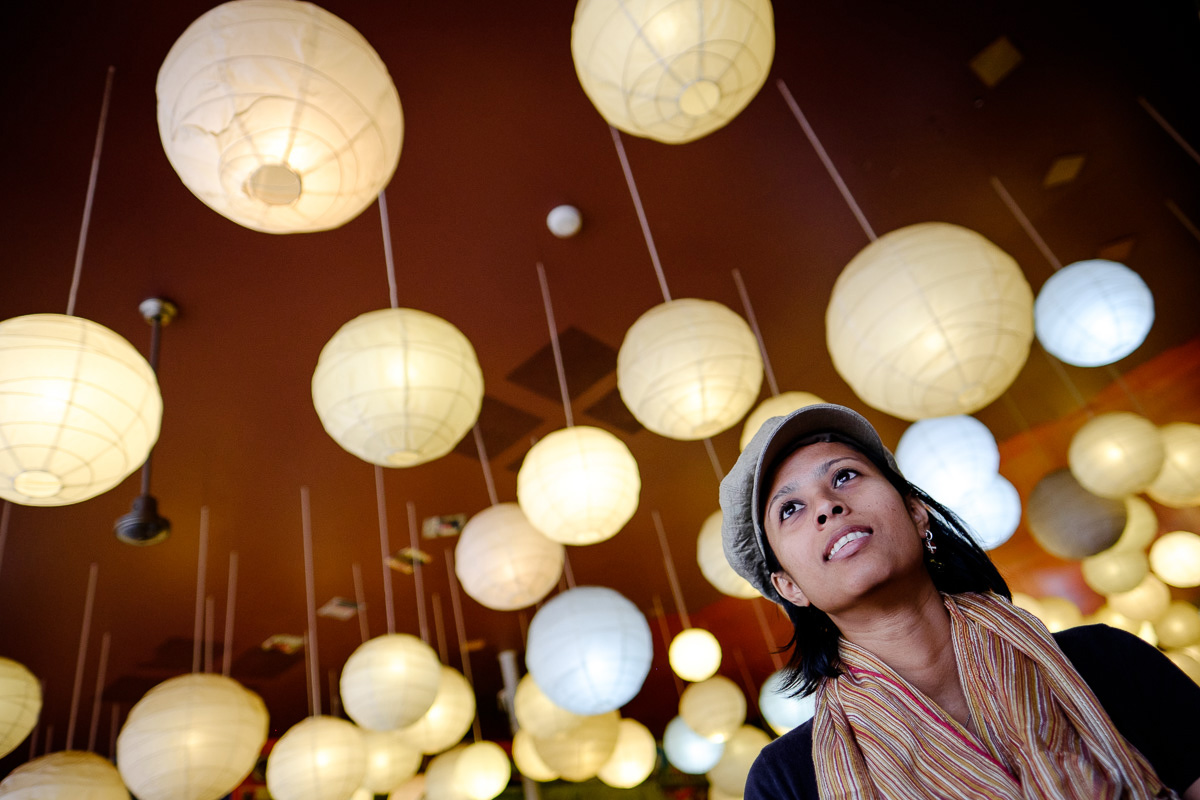


21 Comments on “Fujinon XF16mm F1.4 lens – the wide angle wonder”
Nice review. Which camera is on the last shot?
The upside down picture, that is
Thanks – every image is shot with my X-T1. Sorry I got lazy with the captions at the end 🙂
and now I am not reading your comment right I think. It was shot with my X-T1 and it also features Charlene and her X-T1 – so X-T1 x 2 😀
great practical review!
Thank you Bjørn!
Thanks Flemming – I actually forwent a 14mm f2.8 hanging out for your review and I am now glad I did. It looks a nice lens and your comment about it being as large as the 56mm is heartening – I find that a good size to work with, especially after decades with canons. Just one thing I have discovered when shooting music performances lit by heavy LED lights and you may well have been there, or even discussed it. I have had several shoots where I use the bracket function and shoot with three film stocks at once – Velvia, color neg and monochrome with a green filter (for skin tones). More often than not I found the monochrome to be best because of the contrast ….. anyway, like many things in photography, we all have our preferences. If you make it to Darwin one day, call in. David Hancock.
Hi David,
You are welcome, I think this lens is perfect for you. Oh and I shoot RAW only at my gigs. Best, Flemming
Nice review, Flemming, and great to see night sky samples included. However, it is less great to see such pronounced optical coma, since I was really hoping for Fuji to solve a problem neither Canon nor Sigma (with their latest 24 1.4 Art) have solved… The 24mm focal range apparently is extremely difficult to get right at f1.4 for night skies.
This lens looks amazing in all other respects, but for night shooters it lands in a territory already inhabited by Canon and Sigma in terms of sharpness (and coma issues), so for guys like me who shoots more than one camera system this does not look like the perfect solution I was (naively) hoping it was going to be.
So much for planning to sell the Canon 24 1.4 II and getting the Fuji instead 🙂
But great great music shots – and lovely to see this focal length and aperture range put to such good use. Thanks for the review!
Hello Mads, thanks for your comment. What is “optical coma” and where can I get the drugs to experience it? 🙂
Hi Flemming
Coma is an optical aberration that cause points like stars to become distorted. It seems to me it is most common in the 24mm-range of camera optics. Both Fuji, Canon and Sigma 35mm equivalent lenses are much better at controlling coma at f.14, for instance.
Coma usually disappears once you stop down the lens – but unfortunately then the advantage of having a fast lens for night shots goes away.
http://en.wikipedia.org/wiki/Coma_%28optics%29
Hi Mads, thanks for the explanation! When I look at the 100% raw files from the star shoot, I do see drop shaped stars at 20 second exposure but I always thought that was just from the long exposure. Let me know if you would like a Fuji 16mm raw file or two to study, I would value your feedback on how it shoot stars as I plan another post about the star shoot soon.
Hi Flemming
I would love to see a couple of the night files – maybe the last two of the four, where the stars are more more visible? That would make it easier to judge whether it is coma or trailing (or both) in the shots you posted.
There are a lot of resources for astrophotography. I wrote one a while back for the Danish site Fotomalia, which goes in depth with both northern lights and stars. That article is here:
http://fotomalia.dk/t-dag-nordlys-mads-pihl/
If you or others are looking for English language guides, David Kingham is one of many night shooters who has produced an extensive series of tutorials:
http://www.davidkingham.com/blog/keyword?k=night+tutorials
Email me at mads (at) gmail dot com if you are sending files 🙂
Sorry – the email is madspihl (at) gmail dot com.
As I big fan of the Fuji x-trans I had high hopes for the 16mm 1.4. However it shows considerable coma at 1.4 as evidenced in your night shots. Note the classic butterfly wings on the stars towards the edge.
Sadly it appears no one can produce a fast wide with coma. And the coma shown in your night examples is very harsh and non correctable.
Thanks for posting. Saved me the time of testing yet another failed fast wide design.
It appears to be an excellent fast lens for other applications but not night work.
Paul Caldwell
Hi Paul, thanks for your comment and the explanation, I have learned quite a bit from you and Mads Pihl. Glad the review was useful to you.
Your pictures are excellent and the review is a great read, thank you
i’ve just bought the lens for my XPro-2 but I doubt I’ll do justice as much as you have but it will be fun
Thank you very much, have fun with the 16mm!
These are absolutely beautiful pictures! I am no professional, but it’s safe to say that I am a dedicated amateur ;p
I’ve been saving up to get this lens XF16mm F1.4 lens for my Fuji XA2, and your review really motivates me more to get it. However considering the size of XA2 is much smaller than the lens, do you think this lens will work out well for my XA2? and also which tripod should I be using considering the lens will be much heavier than the camera body? The initial motivation is to capture day/night landscape in Santorini, still object like some interesting local foods with bokeh at the background, and if lucky enough beautiful starry night with milky way and Aurora Australis down in New Zealand.
Thanks 🙂
Hi Stephanie, thank you for your comment, I am glad you like the pictures.
I have never seen nor used the XA2 I must admit. The XF16mmF1.4 is quite a big and heavy lens, I do much prefer it on my X-T2 than on my X-Pro2. However, if you are using it with a tripod then it really does not matter much.
As for tripod, I think any decent strong and stable tripod will work fine. Don’t get the cheapest flimsiest tripod, as it will be too unstable for long exposures. The 16mm lens may be quite heavy but it is still short so the weight will be concentrated in the center of the tripod. If you were using a heavy zoom such as the 100-400 you may have trouble on the X-A2, but the XF16mm will work fine on a tripod with the X-A2 I am sure!
Hope this helps.
Thanks a lot for your helpful comments! 🙂